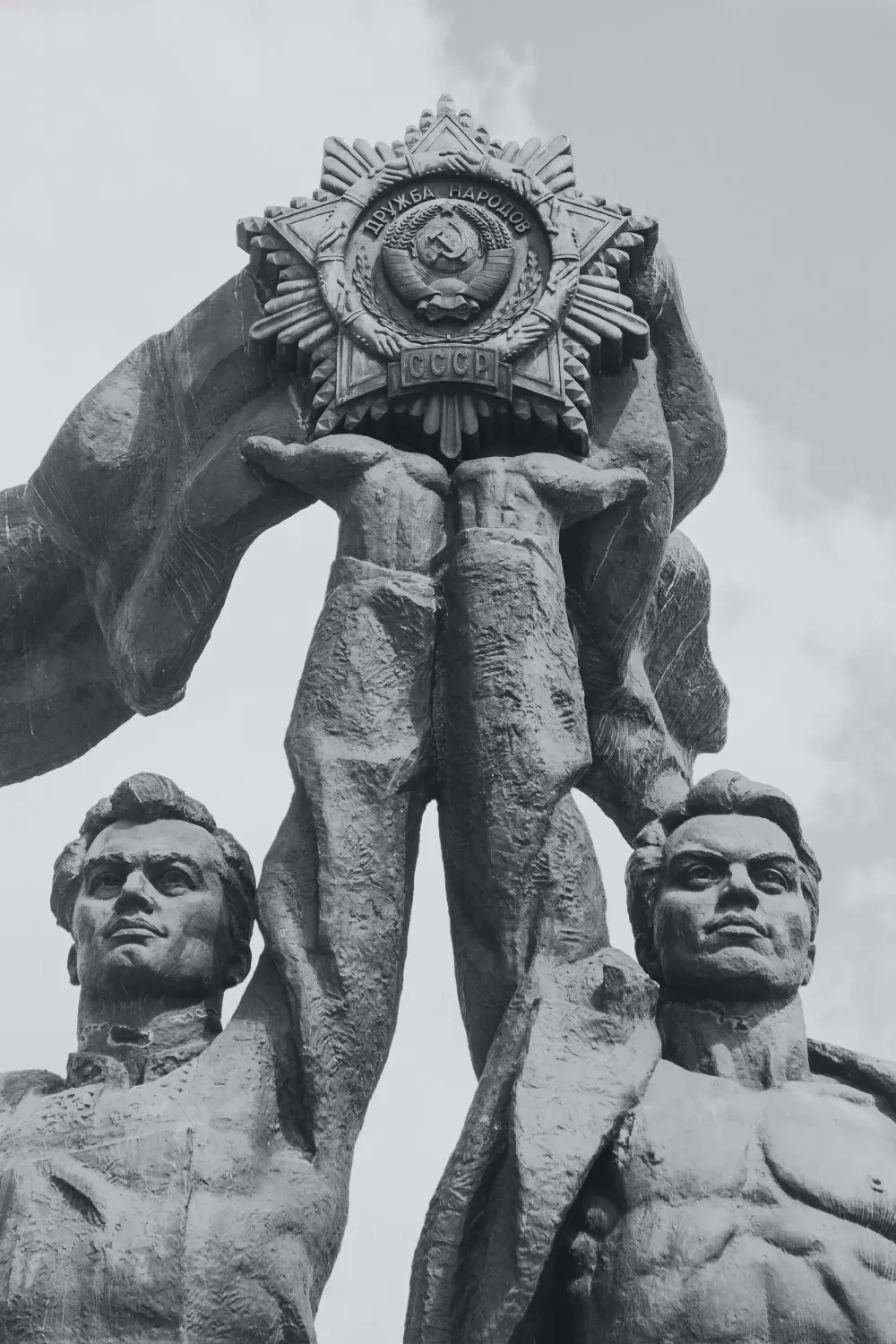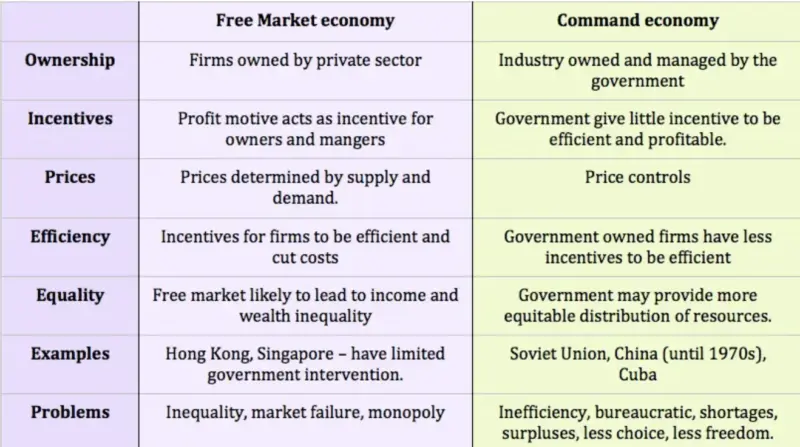
Command Economy
When the government controls all of the major aspects of the economy and economic production, it’s called a command or planned economy. The government makes decisions regarding what to produce, how to produce it, and how to distribute services and goods within the economy. Often, command economies are associated with the political system of communism. In his communist manifesto, Karl Marx argued for “common ownership of the means of production.”
Command economies work in contrast to free-market economies. In free-market economies, the private enterprise produces goods and services. The distribution occurs according to market forces.
How a Command Economy Works
- The government owns the means of production. In a command economy, the government owns some or all of the industries that produce goods and services.
- The government makes decisions regarding pricing and production. Government agencies decide production in a command economy. They pick the goods that are most socially efficient to produce. These agencies can also directly provide rations to consumers or set prices.
- In a command economy, the government has macro-economic objectives such as what to produce and employment rates.
- Some economies that are centrally planned consist of privately owned firms that are closely directed by state management, rather than just state-owned enterprises.
Comparing a Command Economy and a Free Market Economy

Advantages of Command Economies
- Those who support command economies argue that they enable the government to overcome inequality and market failure by creating a society that maximizes social welfare instead of profit.
- Command economies can prevent the abuse of monopoly power.
- Command economies can prevent a common feature of capitalist economies: mass unemployment.
- Command economies can produce goods that benefit society and make sure that everyone has access to necessities.
- Command economies are often associated with the failing, insufficient economies of the late Soviet Union and Cuba. But in the 1920s and 1930s, the Soviet Union had periods of very rapid economic growth. Between the years 1928 and 1940 (the first three Five-Year Plans), the Soviet Union experienced rapid economic growth. It changed from a largely agrarian society to a major industrial nation. Plus, this happened during the Great Depression, a period of depressed world demand.
Disadvantages of Command Economies
- Generally, government agencies have poor information regarding what to produce. Because of centralization, decisions are made by people who might not have access to what is actually happening. In the Soviet Union’s command economy, for example, many produced goods were not used.
- A command economy cannot respond to consumer preferences.
- In a command economy, it’s difficult for resources to move to dynamic and efficient firms because inefficient firms are protected and kept going.
- Command economies threaten liberty and democracy. They create a very powerful government that limits individual rights in order to pursue economic objectives. This then creates a climate in which governments can extend control into other areas of people’s lives.
- Command economies are typically bureaucratic, and committees and planning hold up their decisions.
- In command economies, price controls lead to both shortages and surpluses.
The Transition from Command to Market Economies
Starting in the 1980s, many command economies, like the Soviet Union, started to transition to a mixed economy. They did so using a process of privatization and price deregulation. Mixed economies enable the benefits of a free market with some selected government intervention. In addition, China has made the transition from a command economy to a mixed one, although the country remains politically communist.

